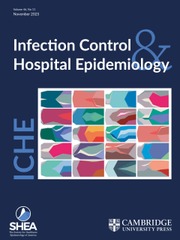No CrossRef data available.
Article contents
Once May Be Enough
Published online by Cambridge University Press: 21 June 2016
Abstract
An abstract is not available for this content so a preview has been provided. As you have access to this content, a full PDF is available via the ‘Save PDF’ action button.
Information
- Type
- Editorial
- Information
- Copyright
- Copyright © The Society for Healthcare Epidemiology of America 1991
References
1. Prokocimer, P, Quazzz, M, Gilbert, C, et al. Short-term prophylactic antibiotics in patients undergoing prostatectomy: report of a double-blind randomized trial with 2 intravenous doses of cefotaxime. J Urol. 1985;135:60–64.Google Scholar
2. Hofer, DR, Schaeffer, AJ. Use of antimicrobials for patients undergoing prostatectomy. Urol Clin North Am. 1990;17:595–600.Google Scholar
3. Richter, S, Lang, R, Zur, F, Nissenkorn, I. Infected urine as a risk factor for postprostatectomy wound infection. Infect Control Hosp Epidemiol. 1991;12:147–149.Google Scholar
4. van den Broek, PF, Daha, TH, Mouton, RP. Bladder irrigation with povidone-iodine in prevention of urinary-tract infections associated with intermittenturethral catheterization. Lancet. 1985;i:563–565.Google Scholar
5. Merimsky, E, Werbin, N, Canetti, R. Preoperative bladder irrigation with povidone-iodine. Br J Urol. 1981;53:330–332.Google Scholar

